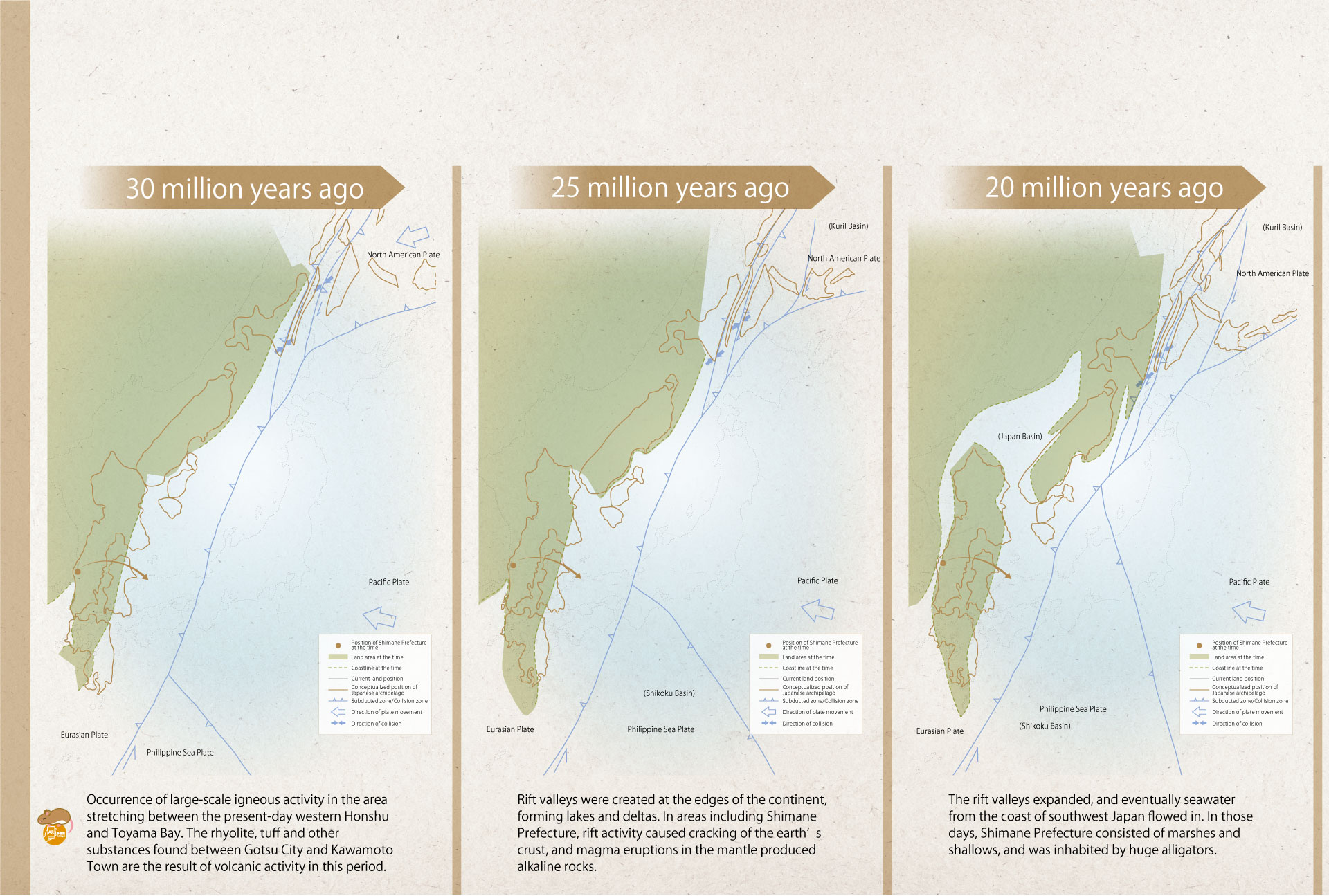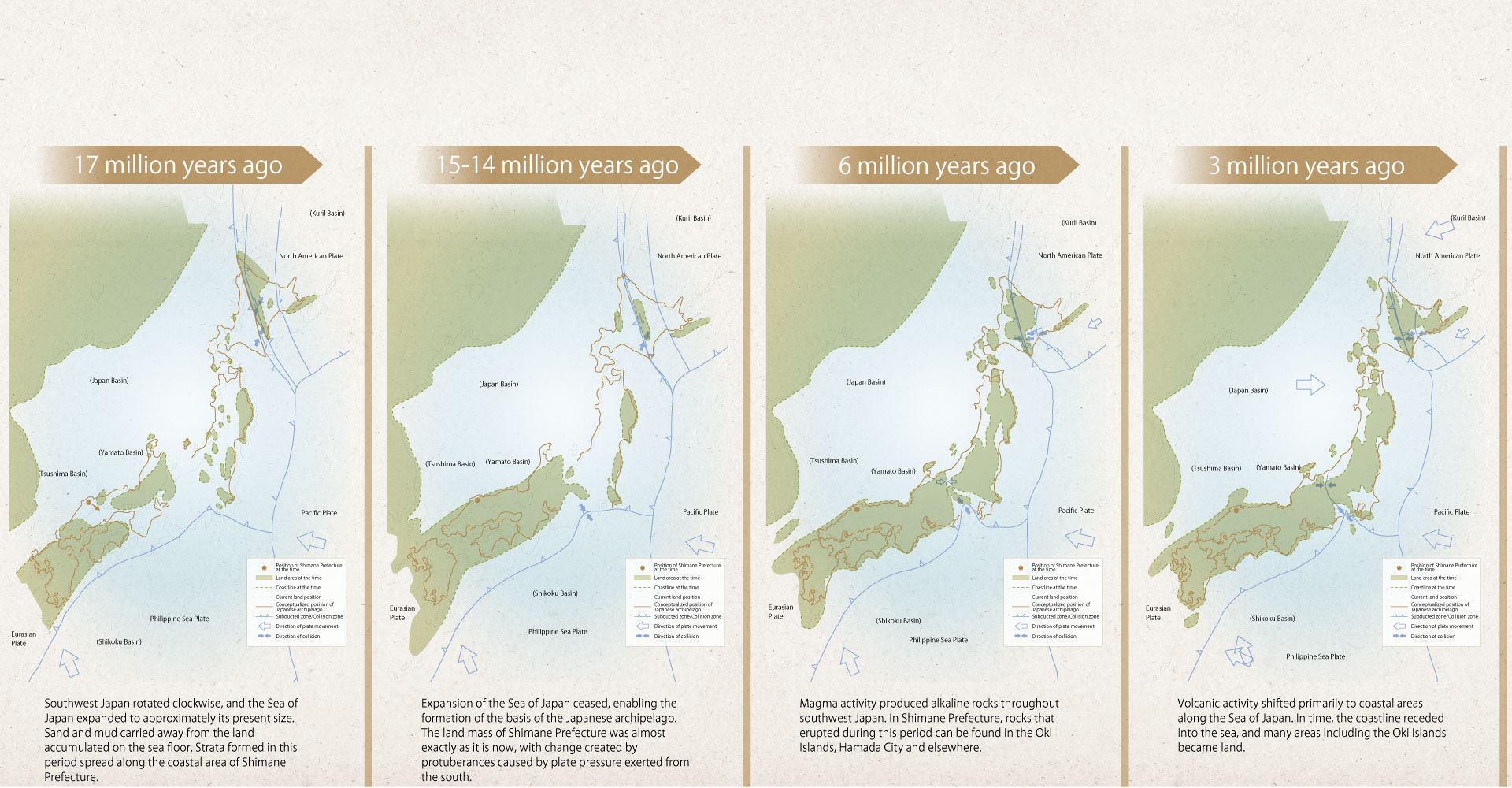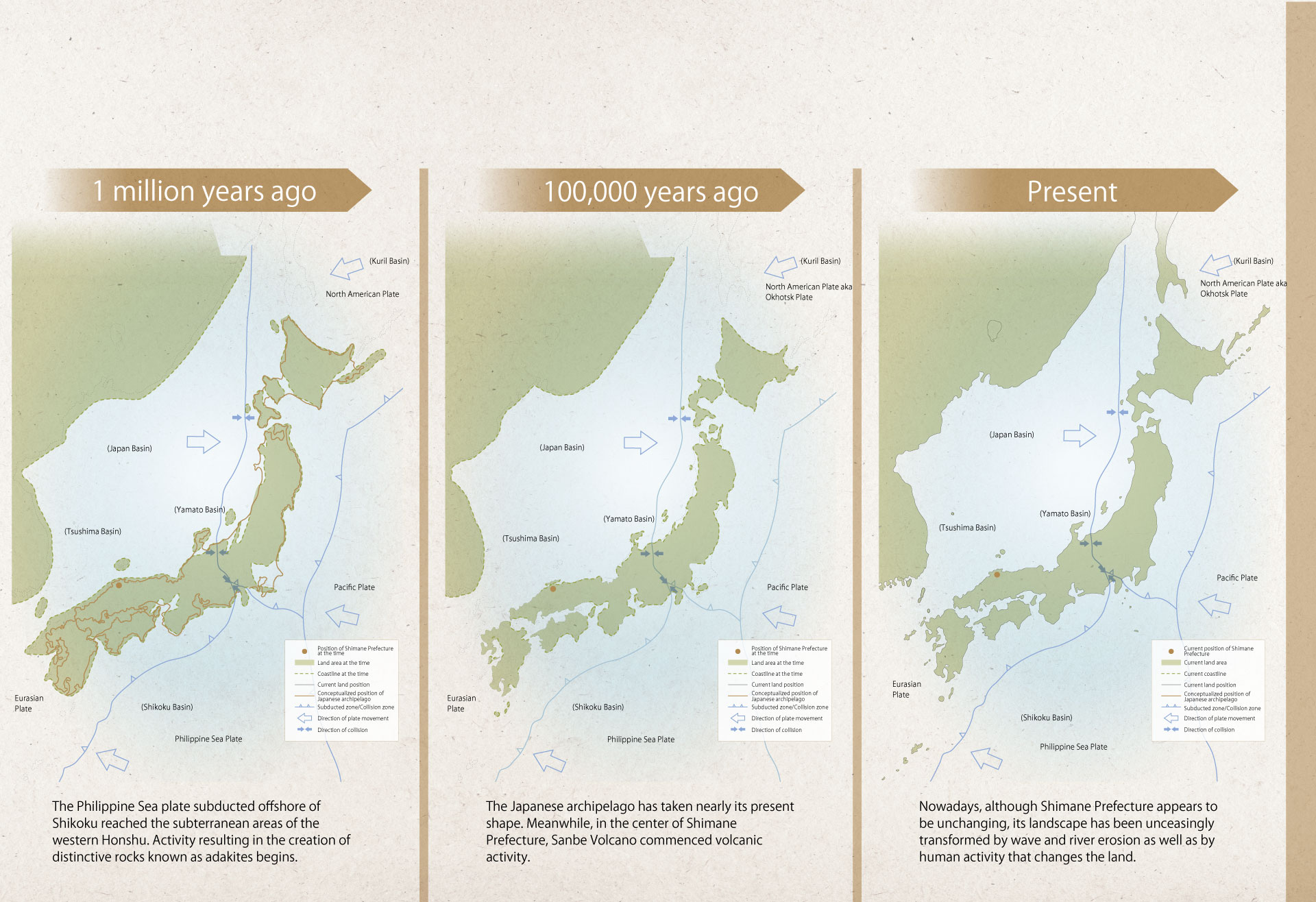The formation of the Japanese archipelago (30 million years ago to the present)
30,000,000 years ago
Occurrence of large-scale igneous activity in the area stretching between the present-day western Honshu and Toyama Bay. The rhyolite, tuff and other substances found between Gotsu City and Kawamoto Town are the result of volcanic activity in this period.
25,000,000 years ago
Rift valleys were created at the edges of the continent, forming lakes and deltas. In areas including Shimane Prefecture, rift activity caused cracking of the earth’s crust, and magma eruptions in the mantle produced alkaline rocks.
20,000,000 years ago
The rift valleys expanded, and eventually seawater from the coast of southwest Japan flowed in. In those days, Shimane Prefecture consisted of marshes and shallows, and was inhabited by huge alligators.
17,000,000 years ago
Southwest Japan rotated clockwise, and the Sea of Japan expanded to approximately its present size. Sand and mud carried away from the land accumulated on the sea floor. Strata formed in this period spread along the coastal area of Shimane Prefecture.
15,000,000 to 14,000,000 years ago
Expansion of the Sea of Japan ceased, enabling the formation of the basis of the Japanese archipelago. The land mass of Shimane Prefecture was almost exactly as it is now, with change created by protuberances caused by plate pressure exerted from the south.
6,000,000 years ago
Magma activity produced alkaline rocks throughout southwest Japan. In Shimane Prefecture, rocks that erupted during this period can be found in the Oki Islands, Hamada City and elsewhere.
3,000,000 years ago
Volcanic activity shifted primarily to coastal areas along the Sea of Japan. In time, the coastline receded into the sea, and many areas including the Oki Islands became land.
1,000,000 years ago
The Philippine Sea plate subducted offshore of Shikoku reached the subterranean areas of the western Honshu. Activity resulting in the creation of distinctive rocks known as adakites begins.
100,000 years ago
The Japanese archipelago has taken nearly its present shape. Meanwhile, in the center of Shimane Prefecture, Sanbe Volcano commenced volcanic activity.
Present
Nowadays, although Shimane Prefecture appears to be unchanging, its landscape has been unceasingly transformed by wave and river erosion as well as by human activity that changes the land.


